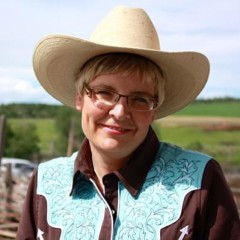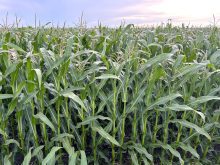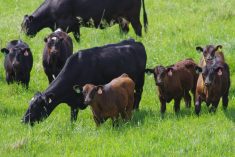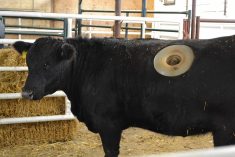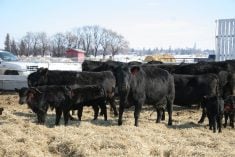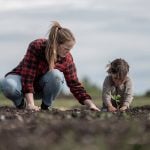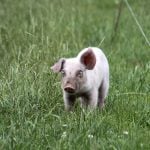Keeping a dog within the confines of your own farm isn’t always easy — but technology is changing that.
Rodney and Tanya Hollman, who raise purebred Gelbvieh cattle near Innisfail, recently put an “invisible fence” around their property to keep their nine-month-old Kangal-cross dog Marleigh from wandering.
The couple chose the Invisible Fence Brand from a U.S. firm because it offered a GPS system that eliminates the need to lay an electronic cable.
“Our last dog, later in his life, started to wander a bit,” said Rodney Hollman. “We did a lot of online searching for a GPS fence, and this was the only one where you could set boundaries other than a circle.”
Read Also
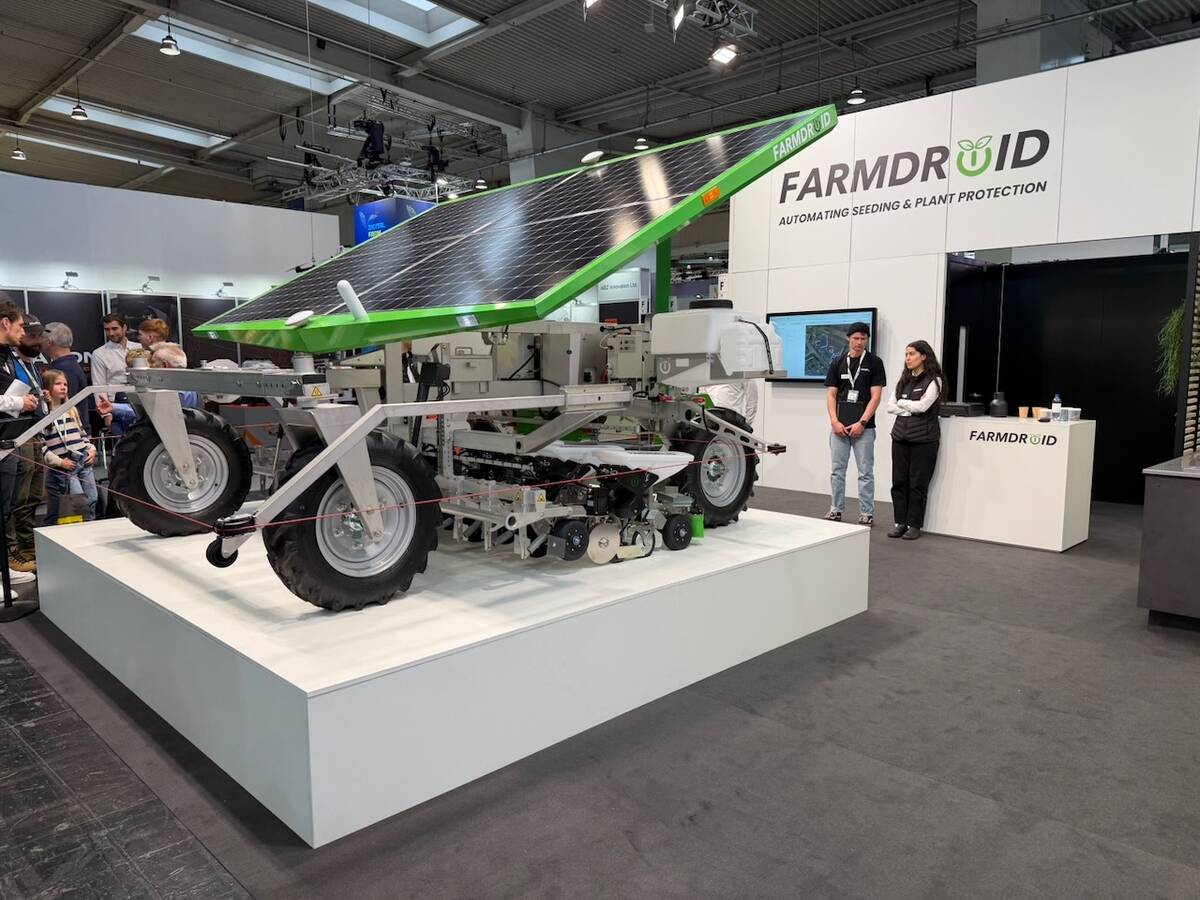
The long march to autonomy
The big players in the machinery market keep adding pieces towards autonomous vehicles for farming, but how far away is a final product?
Keeping a guard dog on the property is especially challenging.
“We mainly have coyote pressure here,” said Hollman. “But we noticed even a fox going through the herd when the cows are in protection mode at calving can put them on edge. Having a dog around can help keep them calm.”
Marleigh is three-quarters Turkish Kangal (crossed with a Pyrenean mastiff) and her breed doesn’t give up chasing invaders easily. And her size means miles are covered quickly. Surrounded by acreages, the Hollmans were looking for a way to help keep the dog safe at home. Using a satellite view of the farm, they were able to draw boundaries for Marleigh, even keeping her off the end of the lane so she’s not running out to meet arriving trucks and trailers.
The basic concept was invented more than 40 years ago by an electrical engineer in the U.S. Midwest who had his dog run over when it was roaming. Originally, the collar provided a bit of a shock if the animal crossed the buried line. But the technology has advanced, now delivering warning tones (all the way up to an electrical vibration) to discourage a dog from crossing the line.
“When we train the dog to know the boundaries, sometimes all that’s needed is the audible sound to get them to turn around and come back,” said Greg Dietz, the Canadian rep for the Invisible Fence Brand.
“When I saw the GPS coming, I wanted it right away, especially for southern Alberta, where there are big yards and big dogs, and installing wiring isn’t really practical.”
Southern Alberta quickly became the company’s best market, he said. Within a month and a half of getting Industry Canada approval in June 2015, southern Alberta had already passed all other locations for installation of GPS collars. (The company’s base price is $2,500, which covers 10 acres and includes two collars, a collar charger, and on-site training of the dog.)
“It’s built for here with our wide-open sky, nothing to interfere with the satellite signals,” said Dietz. “We’re subscribed to 32 satellites.”
GPS technology means boundaries on more than one yard can be designated while potentially hazardous locations, such as dugouts, can be blocked out. Boundaries can also be changed seasonally.
Marleigh quickly got the hang of the system. During her training period, flags were set up at boundary lines as a visual cue and gentle correction signals were used if the boundary was crossed.
“Once the dogs learn to respect the given boundaries, they never need a correction,” said Dietz. “We’re teaching them how to turn the signal off, so the dog is making its own decision of whether to go or not.”
“It’s neat to see Marleigh’s progression,” added Hollman. “We look at this as a way to protect our investment in the dog. It gives us peace of mind that we can have a working dog, and not have to worry about where she is when we’re not by her side. But it gives her the freedom to be a dog at the same time.”

